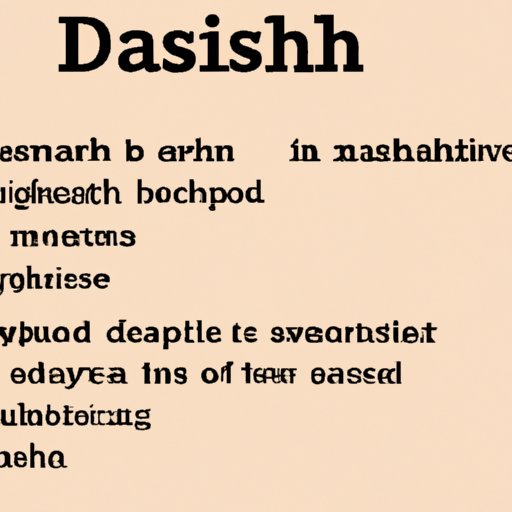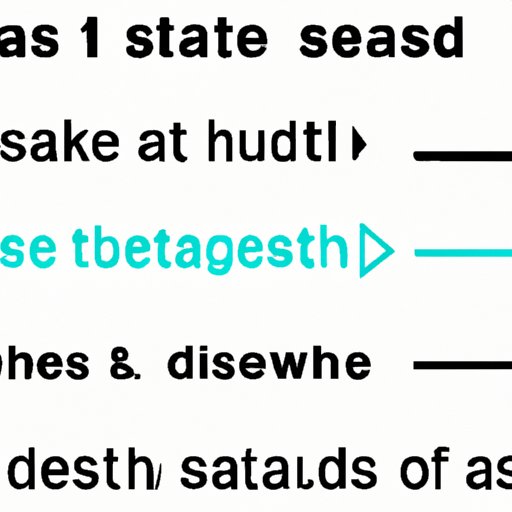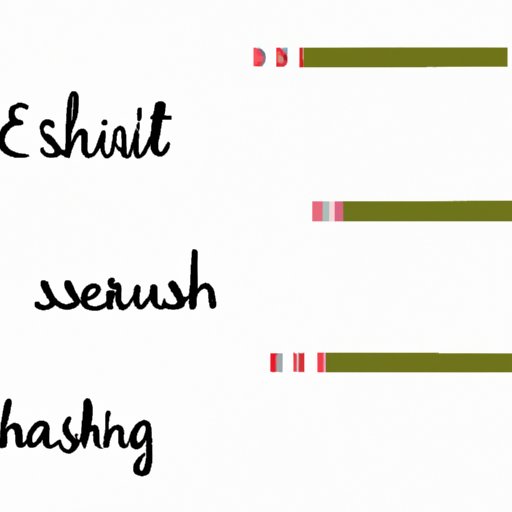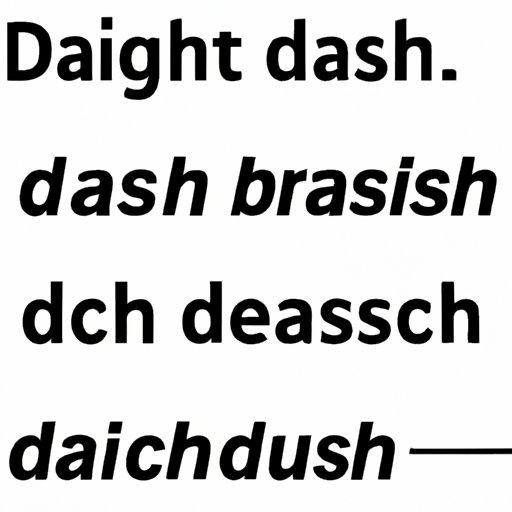Introduction
Writing is an art that requires skill and finesse. One tool writers can use to add flair and emphasis to their work is the dash. A dash is a punctuation mark used to separate words or parts of sentences. It is often used to indicate a break in thought or to set off parenthetical statements. Understanding when and how to use a dash can be a great asset to any writer.

Exploring the Different Uses of Dashes in Writing
Dashes are versatile and can be used in a variety of ways. Here are some of the most common uses for dashes in writing.
Emphasis
One of the primary uses for dashes is to emphasize a point. By using a dash, you can draw attention to a particular word or phrase and give it extra emphasis. This is especially useful if you want to make sure a certain point stands out in your writing.
Interruptions
Dashes can also be used to indicate an interruption in speech. For example, if someone is speaking and they are interrupted by another person or something else, you can use a dash to show the interruption. This can be a great way to create tension or drama in a scene.
Connecting Thoughts
Dashes can also be used to connect two related thoughts. This can help clarify what you are trying to say, or give your writing a smoother flow. For example, if you have two ideas that are closely related, you can use a dash to link them together.
Parenthetical Statements
Finally, dashes can be used to set off parenthetical statements. A parenthetical statement is a comment that is added to a sentence but is not essential to its meaning. By using a dash, you can set off the parenthetical statement, making it clear that it is not part of the main sentence.
Tips for Incorporating Dashes into Your Writing
Now that you understand the different uses for dashes, here are some tips to help you incorporate them into your writing.
Use Sparingly to Avoid Overuse
Dashes can be very effective when used correctly. However, it is important to avoid overusing them. Using too many dashes can make your writing look cluttered and hard to read. It’s best to use them sparingly and only when necessary.
Follow Grammar Rules when Using a Dash
It is important to follow the proper grammar rules when using a dash. Generally, dashes should be used between words or phrases, not between letters or numbers. Also, you should always use a space before and after the dash.
Consider the Length of Your Sentence
When using a dash, it is important to consider the length of your sentence. If the sentence is too long, it may be difficult to read. In this case, it may be better to use a comma or other punctuation marks instead.
Creative Ways to Use Dashes for Emphasis in Writing
Using dashes can be a great way to add emphasis to your writing. Here are some creative ways to use dashes to emphasize certain points.
Use to Introduce a List
You can use a dash to introduce a list of items. This is a great way to emphasize the importance of the items in the list and draw attention to them.
Use to Separate Contrasting Ideas
You can also use dashes to separate contrasting ideas or statements. This can be a great way to emphasize the contrast between the two ideas.
Use to Add an Afterthought
Finally, you can use a dash to add an afterthought or additional comment. This is a great way to emphasize a point or provide additional information without interrupting the flow of the sentence.

How to Effectively Structure Sentences with Dashes
In addition to using dashes for emphasis, you can also use them to improve the structure of your sentences. Here are some tips for effectively structuring sentences with dashes.
Use to Replace Colons and Semicolons
Dashes can be used to replace colons and semicolons in a sentence. This can be a great way to make your writing less formal and more conversational.
Use to Clarify Complex Sentences
Dashes can also be used to clarify complex sentences. This can help make your writing clearer and easier to understand.
Use to Show a Pause or Break in Thought
Finally, dashes can be used to show a pause or break in thought. This can be a great way to add drama or suspense to a sentence.

The Art of Crafting Engaging Sentences with Dashes
Once you understand the basics of using dashes, you can begin to experiment and get creative. Here are some tips for crafting engaging sentences with dashes.
Use to Create Variety in Sentence Structure
Using dashes can be a great way to add variety to your sentence structure. This can make your writing more interesting and engaging for readers.
Use to Make a Point or Emphasize a Word
You can also use dashes to make a point or emphasize a word. This can be a great way to draw attention to an important idea or concept.
Use to Give a Sense of Flow to Your Writing
Finally, you can use dashes to give your writing a sense of flow. This can help make your writing more cohesive and easier to read.
Conclusion
Dashes are a great tool for writers who want to add emphasis and variety to their work. By understanding the different uses for dashes, you can become a more effective writer. Remember to use them sparingly, follow grammar rules, and consider the length of your sentences. You can also get creative and use dashes to make a point or add an afterthought. With practice and experimentation, you can master the art of crafting engaging sentences with dashes.
(Note: Is this article not meeting your expectations? Do you have knowledge or insights to share? Unlock new opportunities and expand your reach by joining our authors team. Click Registration to join us and share your expertise with our readers.)
